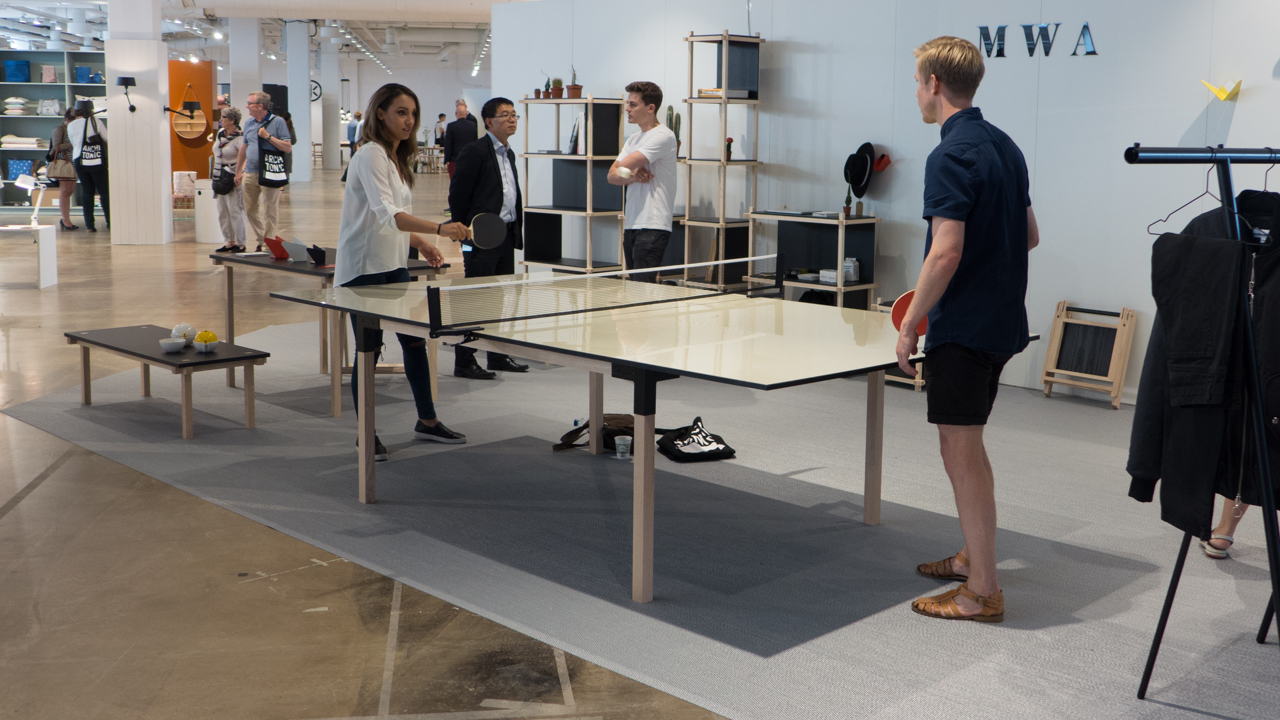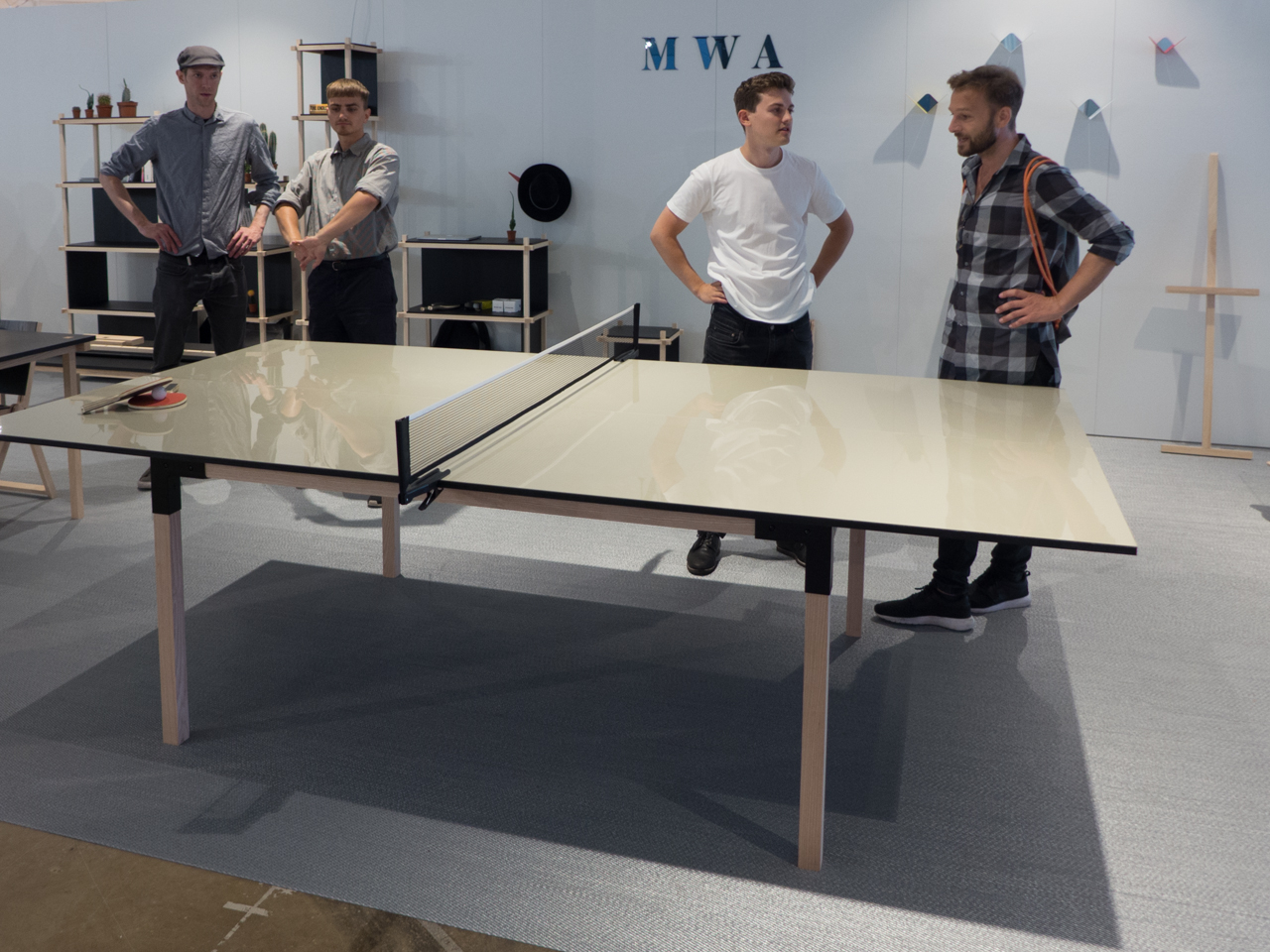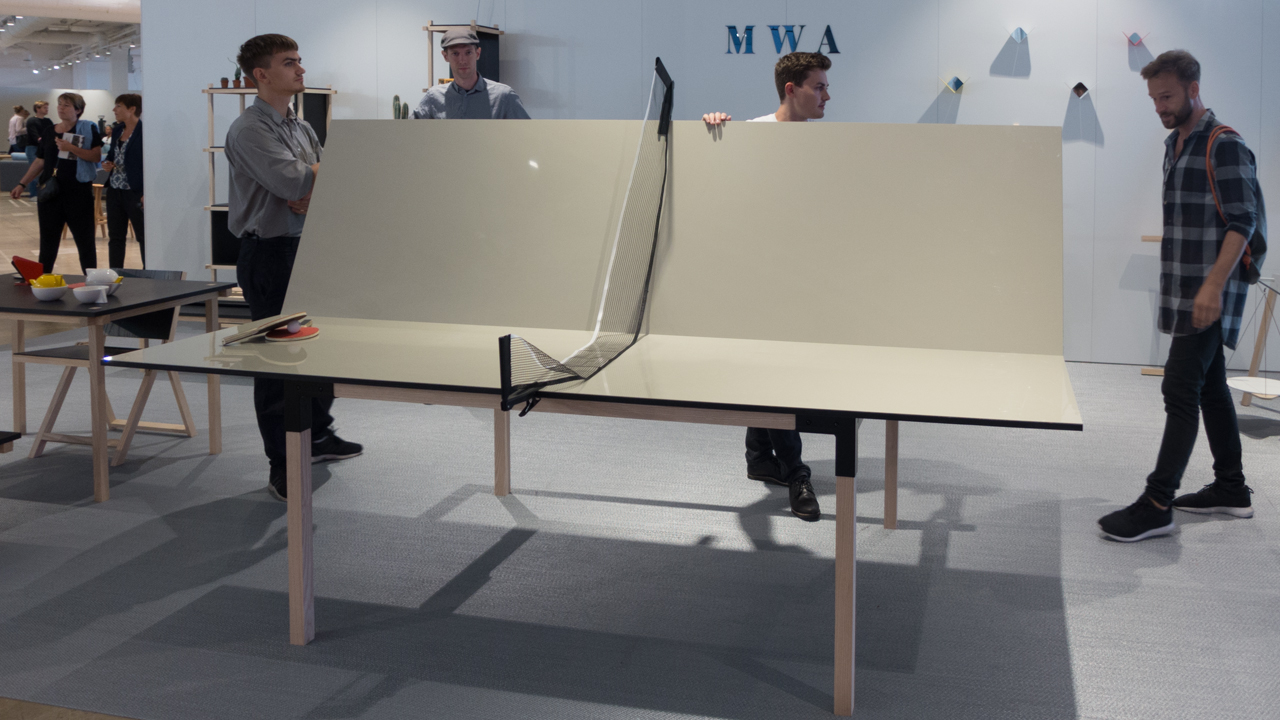Pull-Pong at northmodern
/There is an English company that makes wood sealant and varnish and for its long-running and well-known advertising campaign they use the tag line “does exactly what it says on the tin”.
So, at a basic level, Makers With Agendas is exactly that …they do exactly what they say in their name.
And that is with both definitions of agenda - so they are makers with 'a list of things to be considered' but also in the sense of designers and makers with 'an underlying ideological programme.'
On the Makers' web site they set out their underlying concerns … their agenda … to design for urban mobility and to consider multi-use and take into account minimal logistics, so to make pieces that can be dismantled and packed efficiently for delivery. And among other qualities they aim to design for 'nomadic living’ and to produce designs that are gender neutral.
Typed out like this, and if you don’t know the design work of the group, and if you are cynical by inclination, it would be easy to suspect the hand of an advertising executive here, developing, or trying to develop, a unique selling approach.
In reality, it is designers like those who have formed Makers With Agendas that make me want to write about current design because this is carefully-considered design and design with real commitment and their approach has produced work with a distinct and, for me, a very appealing aesthetic.
By refining the design, for a simple shelf that leans back against the wall (their design called Stilt) or for a support for a table top that unfolds (Accordian) or a side table that hangs from strings and a hook in the ceiling (Swing) rather than being supported by a frame and legs, they produce designs that some would describe as minimal but actually should, perhaps, be described as restrained, elegant and functional: this is clearly an intellectual approach to design - and design that uses precision in construction as a fundamental part of the final form of a piece.
Maybe I’m over analysing or overcomplicating my appreciation. But for me minimalism as a definition for designs, particularly if used to imply something fashionable or 'stylish', has been overused and has begun to be tainted by the implication that it might be just simple and basic … the minimum … and nothing more can or should be added. These pieces from Makers With Agendas are designed the other way round … by reduction. You can not take anything more away without undermining the strength or the aesthetic appeal of the piece. Or am I now labouring the point?
This aim to simplify and strip-down the design, can also be seen in their choice of ash for frames and table legs … ash is a clean-looking, pale timber that has an even and subtle surface grain pattern clear of pronounced knots and it rarely warps or twists even in long but narrow pieces. It is probably as close to metal tubing that you can get in timber.
At northmodern MWA had a large stand and attracted a lot of attention, particularly when they demonstrated opening and closing the Pull-Pong table … the table-tennis table designed by the architect and designer Julien de Smedt.
The frame and legs are in ash with remarkably refined and elegant powder-coated steel corner pieces and a top in plywood covered with polypropylene. Most table-tennis tables have a heavy, frame for the playing surface that is covered top and bottom with wood, often hardboard, and, if they fold for storage, those tables fold on the line of the net and with a hefty supporting frame of legs and cross braces so they are almost impossible to move around and often come with a trolley so they can be folded and then pushed back against a wall. The Pull-Pong has a top in high-quality, thin but stable plywood that is hinged on the long axis and the frame, with a drawer-like mechanism, slides in on itself to form a beautifully proportioned, if slightly unusually-proportioned, dining table or long side table.





































